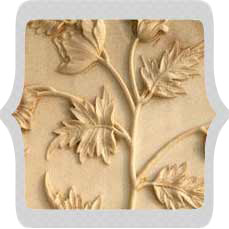This article provides you information about Taj Mahal inside look. Read further to know more about the interiors of Taj Mahal at Agra.
Inside The Taj Mahal
 |
Moving ahead, all the elements, architecture, furniture, and decorations culminate together to create an eschatological house for Mumtaz Mahal, and that of Shah Jahan. Formed with black marble inlaid in white, the floor of the Taj is paved in a geometrical pattern consisting of octagonal stars alternating with cruciform shapes. One of the longest echoes of any building in the world can be heard in this perfectly designed hall of 24 feet to a side, with two tiers of eight radiating niches. The natural and beautiful flowers like tulips, irises, daffodils, and narcissus filled in opulent vases appear here in basic tripartite arrangement rather than individual flowering plants of the pishtaq halls outside. Another remarkable feature that surrounds the cenotaphs of Mumtaz Mahal and Shah Jahan in the central chamber is the intricately carved marble screen or jali and is a delight to look at. The semi precious stones forming twining vines, fruits, and flowers inlaid delicately form the rest of the surfaces.
The burial chamber is located right beneath the central chamber and consists of the actual graves of Mumtaz Mahal and Shah Jahan covered by two cenotaphs. And since the Muslim tradition forbids elaborate decoration of graves, these cenotaphs have different motifs in their decoration. The real cenotaph of Mumtaz Mahal has an almost undecorated platform and is engraved with passages from the Holy Quran, promising God's mercy and forgiveness. Also, the ninety nine beautiful names of Allah can be found as calligraphic inscriptions on the sides of the actual tomb of Mumtaz Mahal. The cenotaph of Shah Jahan that was added much later is bigger than the cenotaph of his wife and is more simplistically decorated than his cenotaph above. Although the same designs appear on the sides of the sarcophagus elements, they are smaller in size. Coming out of such elaborately designed structure as Taj is like coming out of an era that had gone by, an era that added to the world in more than one way, an era that has been kept alive by the wonder that is Taj Mahal.